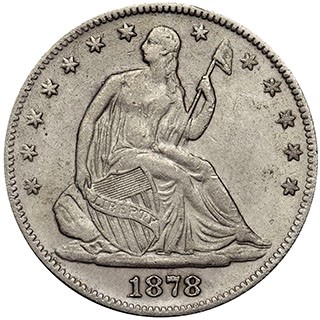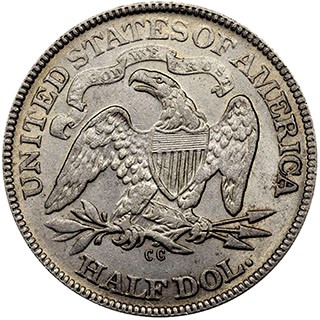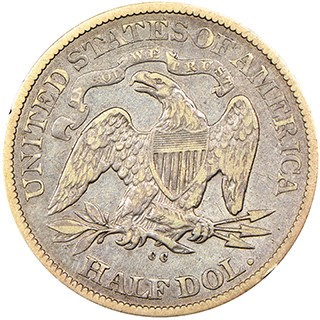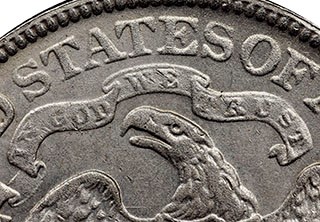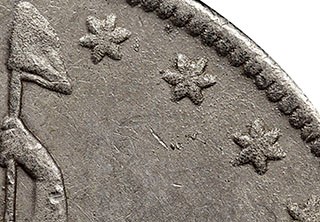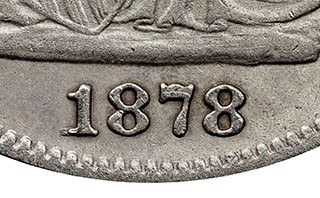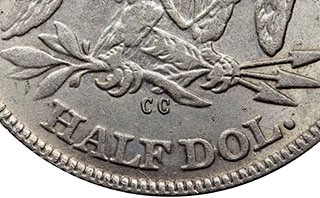Counterfeit Detection: 1878-CC Half Dollar
Posted on 10/11/2020
For the Carson City Mint, 1878 was a watershed year. Minting of dimes, quarters and half dollars ceased there for good, as there was little use at the time for more of these coins. The declining price of silver had prompted people who had been hoarding these denominations to return them to circulation.
The mintage for the 1878-CC Half Dollar was a mere 62,000, making it a Key date in the series. Even lightly circulated examples can be worth thousands of dollars.
Recently, this purported example of an 1878-CC Half Dollar was submitted to NGC. It has a number of problems, providing a good opportunity to review your authentication abilities.
First, it’s always a good idea to check the coin’s weight. This coin is 12.25 grams, which is 0.25 grams (or 2 percent) below what is expected. This doesn’t necessarily mean the coin is a fake, because US Mint tolerances and wear due to circulation could explain the difference. It does raise concern, however.
Next, take a look at the entire coin. Overall, this particular coin has odd luster and a pimply surface, especially when compared to what a genuine example (like the one above) looks like. Both of these raise red flags.
Next, begin to example the coin’s design elements. This coin exhibits poor details on both sides, and it is especially noticeable in the motto IN GOD WE TRUST on the reverse. The porous surfaces on the tops of the letters as well as design elements are also a concern. Another warning sign are the lumps of metal by the stars on the obverse and near the word HALF on the reverse.
Two details in particular should always be examined closely: the date and the mintmark. Note how skinny and misshapen the curves of the 8’s appear when compared with the genuine example. The CC mintmark on the reverse is also misshapen, with the letters also appearing to have gone on a diet. In fact, this mintmark is not only the wrong style, it is far too large for any half dollar reverse dies used after 1876. This alone is enough to determine this coin is not genuine.
A well-trained eye can also see spikes emerging from the rim below the word HALF. Spikes like these are called tool marks, and they indicate that a counterfeiter was attempting to fix a problem with the counterfeit die in that area.
Though a metallurgical analysis was not necessary in this case, NGC did determine that this counterfeit is 78% copper, 20% zinc and 2% nickel. An 1878-CC Half Dollar should be 90% silver and 10% copper.
Not all counterfeits are this easy to spot. If you are uncertain about the authenticity of a coin, remember that NGC backs its determinations of authenticity and grade with the NGC Guarantee.
Did you know? NGC has created a comprehensive Counterfeit Detection resource to help collectors and dealers identify counterfeit and altered coins. Visit NGCcoin.com/counterfeit.
Stay Informed
Want news like this delivered to your inbox once a month? Subscribe to the free NGC eNewsletter today!
